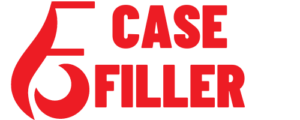How to Read a Pin Sheet
If you’re a bowler, you’re probably familiar with a pin sheet. A pin sheet is a diagram that shows the location of the pins on a bowling lane. Reading a pin sheet is an essential skill for any bowler who wants to improve their game. In this step-by-step guide, we’ll show you how to read a pin sheet so that you can understand the layout of the pins and adjust your game accordingly.
A pin sheet is a diagram that shows the location of the pins on a bowling lane. It’s an essential tool for any bowler who wants to improve their game. By understanding the layout of the pins, you can adjust your game to increase your chances of making a strike. In this guide, we’ll walk you through the process of reading a pin sheet step by step.
Supplies You’ll Need
To read a pin sheet, you’ll need the following supplies:
- A pen or pencil
- A copy of the pin sheet
- A basic understanding of bowling terminology
Step 1: Understand the Basic Layout of a Pin Sheet
A pin sheet is a diagram of a bowling lane that shows the location of the pins. The pins are arranged in a triangular formation, with the head pin at the top of the triangle and the 7 and 10 pins at the corners. Each pin is numbered from 1 to 10, starting with the head pin as number 1 and going clockwise around the triangle.
Step 2: Identify the Lane Conditions
Before you start reading the pin sheet, you need to identify the lane conditions. This includes the oil pattern on the lane, the ball you’re using, and the speed and angle of your delivery.
Step 3: Analyze the Pin Sheet
Now it’s time to analyze the pin sheet. Start by looking at the location of the head pin. This will give you an idea of where you need to aim your ball. Then, look at the location of the other pins and think about the angle and speed of your delivery. You want to aim for the pocket, which is the area between the 1 and 3 pins or the 1 and 2 pins for right-handed bowlers, and the 1 and 2 pins or the 1 and 3 pins for left-handed bowlers.
Step 4: Adjust Your Game
Based on your analysis of the pin sheet, you may need to adjust your game. This could mean changing your starting position, adjusting your approach, or changing the angle and speed of your delivery. The goal is to aim for the pocket and increase your chances of making a strike.
Tips for Reading a Pin Sheet
- Look at the location of the head pin to determine your target.
- Analyze the location of the other pins to determine the best approach.
- Adjust your game based on the pin sheet and lane conditions.
- Practice and experiment to find the best approach for your game.
Frequently Asked Questions (FAQs)
1. Do all bowling alleys use pin sheets?
Yes, all bowling alleys use pin sheets to help bowlers understand the layout of the pins and adjust their game accordingly.
2. Can I use a pin sheet to predict the outcome of my game?
While a pin sheet can give you an idea of where to aim your ball, it’s not a guarantee of success. The outcome of your game depends on many factors, including your skill level, the lane conditions, and the ball you’re using.
3. How do I know which pin to aim for?
In general, you want to aim for the head pin, which is the number 1 pin. This will give you the best chance of making a strike. However, you should also take into account the location of the other pins and adjust your approach accordingly.
4. What if the pin sheet is different from what I’m used to?
Pin sheets can vary depending on the bowling alley and the specific lane conditions. If the pin sheet is different from what you’re used to, take some time to analyze it and adjust your approach accordingly.
5. Can I use a pin sheet for spares?
Yes, you can use a pin sheet to help you make spares. By understanding the location of the pins, you can adjust your approach to increase your chances of hitting the pins you need to make the spare.
6. What if I can’t read the pin sheet?
If you’re having trouble reading the pin sheet, ask a bowling alley staff member or a more experienced bowler for help. They can help you understand the layout of the pins and how to adjust your game accordingly.
7. Can I make my own pin sheet?
Yes, you can create your own pin sheet to help you practice and improve your game. Simply draw a diagram of a bowling lane and mark the location of the pins.
8. How often do pin sheets change?
Pin sheets can change depending on the lane conditions, so it’s important to check the pin sheet before each game. The staff at the bowling alley can provide you with the most up-to-date pin sheet.
9. How do I know if my approach is correct?
If you’re consistently making strikes and spares, then your approach is likely working well for you. However, if you’re not getting the results you want, you may need to adjust your approach and try different strategies.
10. Can I use a pin sheet for different bowling styles?
Yes, you can use a pin sheet for different bowling styles, including straight bowling and hook bowling. However, you may need to adjust your approach based on the specific style you’re using.
Reading a pin sheet is an essential skill for any bowler who wants to improve their game. By understanding the layout of the pins and adjusting your approach accordingly, you can increase your chances of making strikes and spares. With the right supplies and a little bit of practice, you can become a master at reading pin sheets and take your bowling game to the next level.



